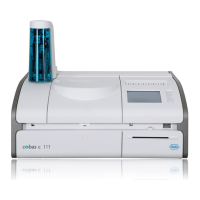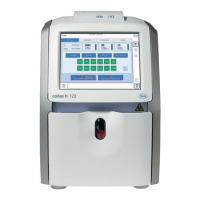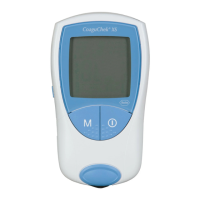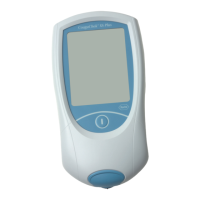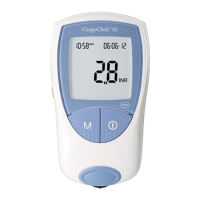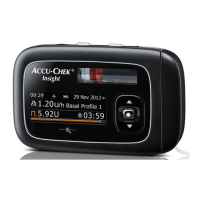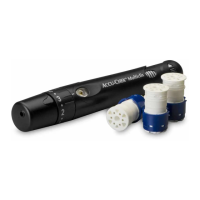122 Performing a QC test
Roche Diagnostics
cobas
®
pulse · Software version 01.03 · User Assistance · Publication version 1.0
Performing a QC test
Accurately testing known levels of glucose ensures that
the system and your technique used in testing give
accurate results on patient samples.
A QC test using QC material comprises the following:
• Select the desired QC level for the test.
• Enter the QC material lot number.
• Perform the QC test with the QC material.
For a QC test to be completed successfully, the result
must fall within the specified range (as shown on the test
strip container label or as defined by configuration).
Patient tests can then be performed again.
i
If your instrument is configured to allow you to
override a QC lockout, you can perform a test
despite a QC lockout, when the QC lockout was
the result of a QC algorithm configuration
condition.
Your instrument can be configured to allow you
to override a QC lockout up to 9 times before you
must perform a QC test.
However, if the QC lockout was the result of a
failed QC test, the QC lockout cannot be
overridden.
To remove a QC lockout, the levels flagged with
"Required" (see step 2) must be measured and have a
"PASS" result.
QC materials for glucose tests have 2 QC levels:
• Level 1 (L1): Low (low values in test results).
• Level 2 (L2): High (high values in test results).
The procedure outlined in this task contains the main
steps in a QC test. However, depending on your
instrument’s configuration, there may be some
differences:
• Test strip ejection after confirming the test result (not
before).
• Comment entry is mandatory (not optional).
The procedures for performing Level 1 and Level 2 tests
are the same.
i
Colored test strip port light provides guidance of
instrument statuses / actions you must take.
5 Routine operation
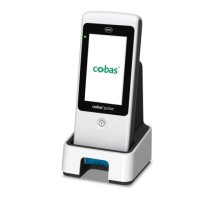
